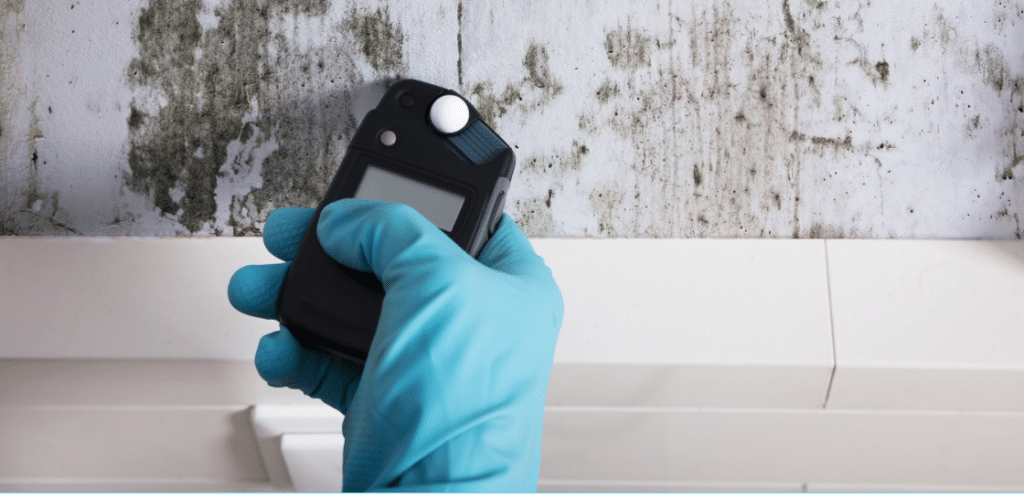Efficient Post Mold Remediation Cleaning Protocols
Efficient Post Mold Remediation Cleaning Protocols
Blog Article
Professional Tips for Post Mold And Mildew Remediation Success
In the realm of mold and mildew removal, efficiently getting rid of mold is only half the battle; the real challenge lies in stopping its reappearance. By sticking to experienced suggestions and best methods, people can guard their rooms versus mold and mildew revival and keep a healthy and balanced indoor atmosphere.
Screen Moisture Degrees Frequently
Normal tracking of moisture degrees is necessary in making certain the effectiveness of message mold and mildew remediation efforts. After finishing mold and mildew remediation treatments, preserving ideal humidity degrees is critical to stop mold re-growth and make certain a healthy indoor atmosphere. Monitoring humidity levels allows for early detection of any type of spikes or variations that might potentially lead to mold rebirth. High humidity levels above 60% produce a conducive setting for mold and mildew to thrive, making regular monitoring a positive action to stop any future mold problems - Post Remediation verification.
In addition, establishing a routine timetable for humidity checks, particularly in risky areas such as kitchens, bathrooms, and basements, is an aggressive method to mold and mildew avoidance. By consistently checking moisture levels, building proprietors can successfully minimize the danger of mold and mildew reoccurrence and maintain a healthy and balanced interior environment post-remediation.
Conduct Thorough Inspections Post-Remediation
Adhering to the conclusion of mold removal procedures, it is crucial to conduct thorough evaluations to validate the effectiveness of the remediation procedure. These post-remediation assessments are crucial in guaranteeing that the mold concern has been effectively attended to and that there is no reappearance or remaining mold and mildew development. Assessments must be performed by qualified specialists that have experience in recognizing mold and mildew and analyzing indoor air high quality.
During these assessments, different approaches such as visual analyses, air tasting, and surface area sampling may be used to extensively review the remediated areas. Visual analyses include a detailed assessment of the facilities to examine for any kind of noticeable indications of mold and mildew growth or water damage. Air tasting assists in determining the airborne mold spore levels, while surface area tasting can discover mold bits on surfaces.
Implement Proper Air Flow Strategies
After making sure the performance of the mold remediation process via detailed inspections, the next crucial step is to focus on carrying out proper air flow techniques. Ample air flow is important in stopping mold reoccurrence by managing dampness levels and advertising air blood circulation.
Appropriate ventilation not only aids in stopping mold development yet also adds to the total health and wellness and convenience of passengers. By ensuring ample ventilation throughout the building, you can reduce the danger of mold regrowth and develop a much healthier living atmosphere.

Usage Mold-Resistant Products for Repairs
To enhance the long-term performance of mold remediation initiatives, including mold-resistant products for fixings is critical in minimizing the danger of future mold and mildew development. Mold-resistant products are created to stand up to dampness and hinder mold and mildew growth, making them a vital selection for areas vulnerable to dampness and humidity. When repairing areas impacted by mold and mildew, using materials such as mold-resistant drywall, mold-resistant paints, and mold-resistant caulking can assist prevent mold reappearance.
Mold-resistant drywall is a superb alternative to typical drywall in locations like bathrooms and cellars where wetness levels are higher. This sort of drywall has an unique covering that stands up to mold and mildew growth even when revealed to damp problems. Additionally, using mold-resistant paints including antimicrobial representatives can better prevent mold advancement on ceilings and wall surfaces.
In locations where wetness is typical, such as washrooms and kitchens, making use of mold-resistant caulking around windows, tubs, and sinks can assist secure out water and stop mold from taking hold in splits and holes. By spending in these mold-resistant materials throughout repair work post-remediation, you can substantially lower the chance of future mold issues and keep a healthier interior atmosphere.
Maintain Cleanliness and Address Water Issues
Making sure sanitation testing air quality after mold remediation and quickly addressing water issues are basic practices to maintain in safeguarding indoor spaces from mold reinfestation. After mold removal, it is vital to maintain a tidy environment to stop the regrowth of mold (what to do after mold remediation). Regular cleansing, dusting, and vacuuming can assist eliminate any kind of remaining mold spores and avoid them from settling and proliferating. Additionally, keeping indoor spaces dry and dealing with any water problems quickly is essential in mold and mildew avoidance. Leakages, water breach, or high moisture degrees can develop the ideal breeding ground for mold, so it is essential to fix any type of water-related issues right away.
To keep sanitation, take into consideration using HEPA filters in vacuums and air cleansers to catch mold spores and stop their blood circulation in the air. Making certain appropriate ventilation in areas prone to moisture accumulation, such as restrooms and cooking areas, can assist maintain moisture levels in check. By remaining vigilant regarding cleanliness and dealing with water problems quickly, you can successfully protect against mold and mildew reinfestation and maintain a healthy and balanced interior environment.
Conclusion

In the realm of mold remediation, effectively removing mold and mildew is just half the battle; the real challenge exists in avoiding its reappearance. After finishing mold removal procedures, maintaining optimum humidity degrees is crucial to avoid mold and mildew re-growth and guarantee a healthy and balanced indoor environment. High humidity degrees over 60% create a favorable atmosphere for mold to flourish, making regular keeping track of a positive procedure to avoid any type of future mold problems.
To boost the long-lasting performance of mold remediation efforts, including mold-resistant materials for repair services is critical in mitigating the danger of future mold and mildew growth. After mold removal, it is important to keep a clean atmosphere to avoid the regrowth of mold and mildew.
Report this page